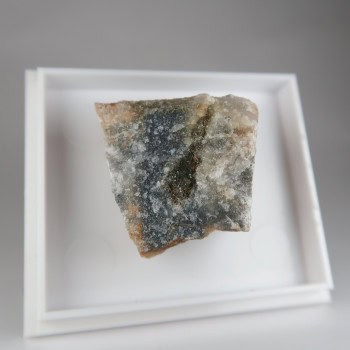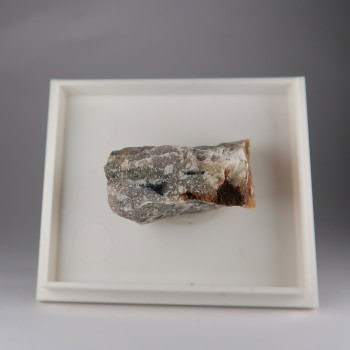Berthierite
Berthierite is a metallic, steel-gray to dark grey mineral that often occurs in fibrous, radiating, or massive aggregates.
Showing all 2 results
-

Berthierite from Gründenwald, Germany
Price range: £20.00 through £35.00 -

Meta-Stibnite after Berthierite from Gründenwald, Germany
£20.00
Information about Berthierite
Berthierite is a metallic, steel-gray to dark grey mineral that often occurs in fibrous, radiating, or massive aggregates.
It exhibits a submetallic to silky luster on fresh surfaces, which can tarnish to iridescent hues over time.
Berthierite is opaque and typically associated with sulfide-rich hydrothermal veins and skarn deposits. It is occasionally found intergrown with other sulphide minerals such as stibnite or pyrite.
Uses and History
Berthierite is not a commercially significant mineral but is of interest to mineral collectors due to its distinctive fibrous appearance and association with rare mineral assemblages.
It also serves as a minor source of antimony.
Berthierite was first described in 1827 and was named in honor of the French chemist Pierre Berthier, who made significant contributions to the study of mineralogy and metallurgy.
Mineralogy
Dark, steely grey – often tarnished, sometimes an iridescent tarnish.
Hazards and Warnings
Mineral collectors should wash their hands after handling specimens, to avoid any exposure to potential toxins.
Almost all rocks, minerals (and, frankly, almost all other substances on earth) can produce toxic dust when cutting, which can cause serious respiratory conditions including silicosis.
When cutting or polishing rocks, minerals, shells, etc, all work should be done wet to minimise the dust, and a suitable respirator or extraction system should be used.
Translations
Arabic:
Hindi:
Portuguese:
Bengali:
Indonesian:
Punjabi:
English:
Italian:
Russian:
- Бертьерит
French:
Japanese:
- ベルチェ鉱
Spanish:
- Berthierita
German:
- Berthierit
Korean:
Thai:
Gujurati:
Mandarin Chinese:
- 辉铁锑矿
Urdu:
